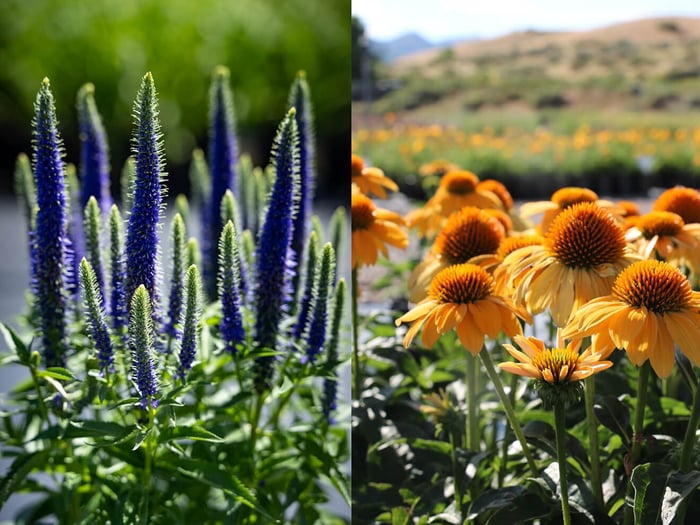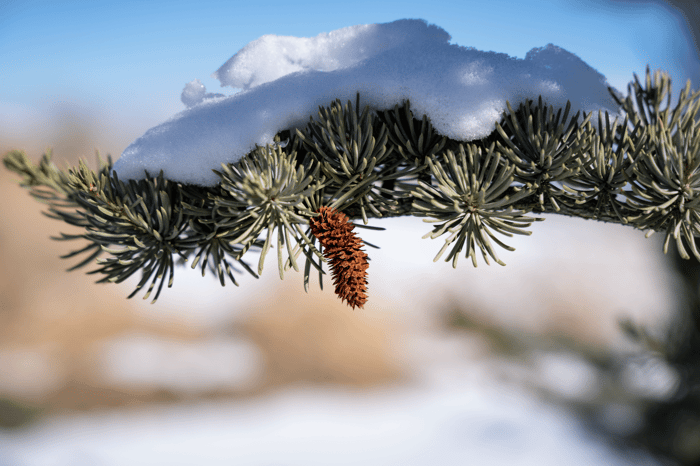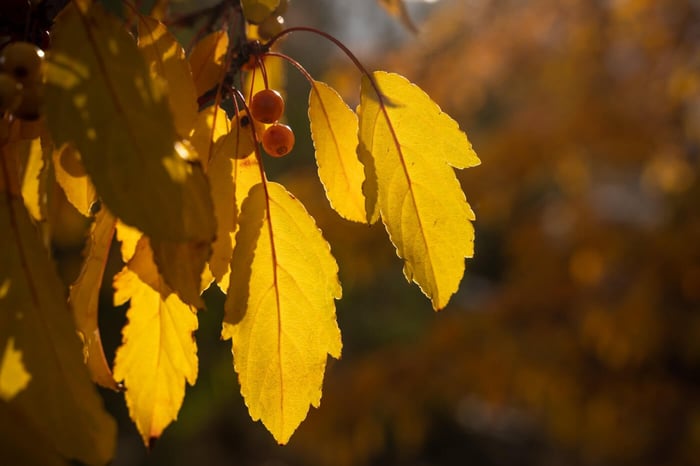Creating your ideal landscape can be a lot of fun. There’s a certain satisfaction that comes from relaxing in a garden you created with your own hands. One way to make your garden truly impactful is to consider the visual interplay between the various plants in your yard. Some plants simply work better together. We call these companion plants.
 Apricot Drift Roses and Buddleia Pugster, Blue are stunning companion plants in any landscape.
Apricot Drift Roses and Buddleia Pugster, Blue are stunning companion plants in any landscape.
Finding plants you love is just the first step. For the greatest overall impact in your garden, it helps to know where to place them and which plants to pair with them. It would take ages to create an exhaustive list of plants that partner well. We’d rather give you general information so you can create your own unique garden. The following tips can help you select plant combinations for your yard.
Mature plant size
Will the plant fit in the allotted space when it’s grown? Will it grow too large, or not large enough? Will it act as a backdrop for other plants in the planter bed, or will it be used to pop against the surrounding colors? Is your bed large enough to accommodate layers of plants of varying heights?
One of the most common challenges we see when we are consulting with homeowners is that their planter beds are too narrow. For ultimate impact, you want to pair plants with other plants that accentuate certain traits. In order to do that, you need to give your plants room to grow, and space for friends. In our dry, Utah climate, we strongly encourage you to cut out as much grass as necessary to give your plants room to shine.
Landscaping with patches of color encourages your eye to dance through your yard. This patch of purple hummingbird mint leads your eye to a patch of red roses and Sombrero Salsa Red cone flowers, and then on to the white blossoms of Quick Fire Hydrangea trees.
Color
If you want to make a powerful impact, it’s best to plant in mass. Don’t just pick up one or two plants that you like. Instead, plant enough to create a patch of color. Color patches throughout the landscape will lead your eye through your yard and create intrigue.
You may also want to consider complementary colors such as purple and yellow, blue and orange, or the contrast of white against dark foliage. This kind of contrast makes both plants pop against each other for powerful visual interest (like the deep blue Veronica Royal Candles and the Sombrero Granada Gold Yellow Coneflower at the top of this email).
Another option is to use analogous colors in your garden. This means that the foliage or flower colors of your plants will be beside each other on the color wheel. Surrounding yourself in analogous colors can help create a specific mood in your garden. Some people say it has a calming effect.
This combination of hosta, boxwood, and heuchera provide great contrast in color and texture
almost year-round.
Foliage
Flowers come and go, but the color and texture of your foliage will last the whole year. You may be surprised at how many color combinations you can get from foliage alone: yellow, every shade of green, red, maroon, orange, and more! Focusing on foliage will have the longest-lasting visual impact on your yard.
Texture
Texture refers to the shape of your plant and its foliage. Does it look rough, smooth, rippled, variegated, or stubbly? You can create interest simply by combining plants with varying textures—placing plants with smooth, broad leaves against those with small wrinkled leaves, or needles. Just remember, the key is to place plants next to other plants to accentuate a certain characteristic.

We're Happy to Help
Landscape designers spend years studying plants to know which will work best in your yard and with your growing conditions. We highly recommend consulting a designer for your landscaping projects, but even if you don’t, you can create an amazing yard with a little help from us. We’ve been growing thousands of plants right here in the Salt Lake Valley for more than 30 years. We know how they will respond to your growing conditions.







